2018 年四川成人高考专升本英语真题及答案
I. Phonetics(5 points)
第Ⅰ卷(选择题,共 125 分)
Directions: In each of the following groups of words, there are four underlined
letters or letter combinations marked a, b, and d.compare the underlined parts and
identify the one that is different from the others in pronunciation. Mark your answer
by blackening the corresponding letter on the Answer Sheet.
1.A.captain B.sustain C.contain D.retain
2.A.pension B. mission C.tension D.revision
3.A.actress B.business C.excess D.endless
4.A.combination B.climbing C.bamboo D.ambition
5.A.blew B.crew C.sew D.Jew
II. Vocabulary and Structure( 15 points)
Directions: There are 15 incomplete sentences in this section. For each sentence
there are four choices marked A, B, C and D. Choose one answer that best completes
the sentence and blacken the corresponding letter on the Answer Sheet.
6. asked two passers-by how to get to the new railway station, but
of them knew it.
A.none B.either C.neither D.both
7. —The boss wants to talk to you. He seems unhappy with your performance.
—Oh,I
be in trouble. I hope he won't fire me.
A.must B.can C.should D. would
8.
my daughter reaches the age of eighteen she can apply for driving license.
A.Unless B.Because C.Since D.Once
9. I'll consider
Ms. Smith tonight, but I am not sure if I have the time.
A.to see B.seeing C.to have seen D.see
10. The train
to arrive at 11: 30, but it was an hour late.
A.was supposed B.is supposed C.supposes D.supposed
11. Bob doesn't look his age. I think he's somewhere
.
�
A. in forty B. in forties C. in his forty D. in his forties
12. I feel very excited the thought of joining my family in a week.
A.on B.for C.at D.in
13.
a hotel, we looked for somewhere to have dinner.
A. Finding B.Having found C.We finding D.We found
14. Despite the sudden breakdown of the General Manager,
work is going on in
the company.
A. usual B. routine C. normal D. regular
15. At such a time of crisis, we must try to
all differences and stick together.
A. set apart B. set back C. set aside D. set down
16. Many governments are now taking
to reduce smoking in public places.
A.steps B.sides C.effect D.change
17. The employees
more enthusiastic about their work since their pay rose.
A.are B. have been C. were D. will be
18. Children don't understand initially what they are reciting, but
it will have
an impact on their thinking.
A.casually B.especially C.regularly D.gradually
19. The university regulations require that the students
at least 90% of the
lectures.
A.attended B.to attend C.would attend D.attend
20. In October 2007, the Chang'e-1 satellite was successfully
at Xichang.
A.launched B. presented C.regulated D. engaged
Ⅲ. Cloze(30 points)
Directions: For each blank in the following passage, there are four choices marked
A, B,C and D. Choose the one that is most suitable and mark your answer by blackening
the corresponding letter on the Answer Sheet.
The destruction of habitats(栖息地) all over the world is the primary reason
species are becoming extinct(灭绝) or endangered. Houses, highways,dams,
industrial buildings, and ever-spreading- farms now dominate 21 formerly occupied
by forests, deserts, and wetlands. 22 the beginning of European settlement in
�
America, 23 over 65,000,000 acres of wetlands have been drained. One million acres
alone vanished 24 1985 and 1995.
habitat destruction can be 25 or it can be subtle occurring over a 26 period
of time without being noticed. 27 such as sewage from cities and chemical runoff
from farms, can change the 28 and quantity of water in streams and rivers. To 29
living in a delicately balanced habitat, this disturbance can be as 30 as the
clear-cutting of a rainforest.
31 remaining habitats are carved into smaller and smaller pockets or islands,
remaining species are forced to exist in these 32 areas, which causes further habitat
33. These species become less adaptable to environmental 34 in fact, they become
35 endangered Scientists believe that when a habitat is cut by 90%, one-half of its
plants, animals and insects will become extinct.
21.A.landscapes B. cities C.maps D. pictures
22.A.At B. Before C.After D.Since
23.A.for example B.in addition C.at last D.after all
24.A.both B.in C.between D.before
25.A.simple B.beneficial C. interesting D. obvious
26.A.long B.short C.happy D. sad
27.A.Construction B.Pollution C.Farming D.Living
28.A.amount B.purity C.nature D.quality
29.A.people B.species C.plants D.insects
30.A.effective B.small C. fatal D.surprising
31.A.How B. Whether C. Before D. As
32.A.crowded B.extensive C.large D. bare
33.A.reform B.destruction C.support D.discovery
34.A.improvements B.changes C.protection D.development
35.A.even B.far C.more D.less
IV. Reading Comprehension( 60 points)
Directions: There are five reading passages in this part. Each passage is followed
by four questions. For each question there are four suggested answers marked A, B,
�
C and D. Choose the best answer and blacken the corresponding letter on the Answer
Sheet.
Passage One
Woman nabbed for a DUI at same crash spot
Wed May 21, 2:17 AM ET
TRUCKEE, Calif.Call it drunken driving deja vu(记忆幻觉). For the second time
in five months, a 23-year-old California woman has been arrested after she crashed
her car while driving under the influence(DUI)at the exact same spot north of Lake
Tahoe.
And to top it off, Truckee Police say that in both cases, her blood alcohol
content was more than three times the legal limit.
The police say Melissa Dennison of Truckee crashed at about noon on Sunday on
Glenshire Drive just south of the Glenshire Bridge. They say she was extremely drunk
and had trouble standing or walking.Her blood alcohol level initially was measured
at 346. The legal limit.08.
Sergeant J. Litchie said Dennison also had been charged with a DUI in January
when she crashed at the same spot and registered a blood alcohol level of 380. If
found guilty of the second offense, she faces up to 10 years in prison and fines
in excess of 2.000.
A telephone message the Associated Press left at a listing for Dennison in
Truckee on Tuesday was not immediately returned.
36. Who is the author of the passage?
A. A passenger.
B. A policeman.
C. A judge.
D. A journalist.
37. Why couldn't the woman stand and walk?
�
A. She had lost too much blood.
B. She was scared.
C. She drank too much.
D. She had a sudden stomachache.
38. Why could the woman be imprisoned for 10 years?
A. She was caught DUI twice.
B. She had her car crashed.
C. She refused to take a blood test.
D. She drove without driving license.s
39. What does the word"nabbed"in the title mean?
A. Arrested.
B. Attacked.
C. Charged.
D. Punished.
Passage Two
There were many different cultures in the ancient world, but the two that had
the most influence on European and American civilizations were the Greek and the
Roman. Often these two cultures are lumped together in our minds, as if they were
really exactly alike. But that is not the case. In many ways the Greeks and the Romans
could not have been more different.
The Greeks were truly democratic, often without a single leader but instead
governed by a group of men chosen by the people. The Romans were semi-democratic.
They had a governing Senate, but the political power was mostly or completely in
the hands of a single emperor.
Both cultures were great builders. But the construction interests of the two
cultures were also different. The Greeks tended to be more artistic. Their buildings
were well constructed and they were especially interested in temples, columns, and
decorative forms. The Romans, on the other hand, were more engineers than artists.
�
They concentrated their efforts on urban planning, well-functioning water pipes,
and the best roads.
Only in cooking and eating habits are the two cultures really similar. Both
peoples ate very well indeed: lots of fish, fresh vegetables and fruits, healthy
meals, holding at the same time long discussions and tasting excellent wines.
In fact, it would probably be fair to say that they both loved life in their
warm,sea-oriented climates and they both lived a full life.
40. What is the first paragraph about?
A. The Greek and the Roman were similar.
B. People misunderstood European civilization.
C. Greek civilization was quite different from Roman civilization.
D. European civilization influenced American civilization greatly.
41. Which of the following is TRUE?
A. The Romans had more political awareness.
B. The Romans had less political freedom and democracy.
C. The Romans had more freedom to choose their leader.
D. The Romans had fewer people elected into the government.
42. What were the Greeks famous for?
A. The overall planning of a city or a town.
B. The artistic decoration of the buildings.
C. The practical functions of the buildings.a
D. The system of water supply and transportation.
43. How are the two cultures alike?
A. Both loved the sea.
B. Both lived long lives.
C. Both loved cooking
D. Both enjoyed talking over meals.
Passage Three
�
As recently as three decades ago, many Americans believed that using credit
was an unwise and dangerous way to pay for what they bought. Some even thought that
owing money to a store or a credit company was something to be ashamed of. Good
citizens, they believed, always bought what they wanted with real money and they
paid the full price immediately.
Today, however, all that has changed. Credit, as some observers have noted,
has become a way of life in the United States. More and more Americans now are
depending on those small pieces of plastic, credit cards, to pay for large purchases
such as televisions, record players or furniture. Many people today would consider
it unusual not to use a credit card to pay for a costly restaurant dinner, a hotel
room or an airline trip. And there are some situations in which Americans must have
credit cards. If they want the temporary use of a car, for example, they first must
give the car rental company the number of their credit card. That number is considered
a guarantee that they will return the car and pay
Credit cards offer two major services to Americans. First of all, they are
easier and safer to carry than large amounts of money. Second, they permit people
to borrow, to have the immediate pleasure of owning something, even if they do not
have enough money to pay for it at the time. With credit cards people pay for goods
or services at the end of each month instead of when they buy them. And when the
time does come to pay, most credit cards offer people a choice. They can pay all
of what they owe for the month or they can just pay usually between 5 and 10 percent
of what they owe.
44. What do Americans feel about using credit cards nowadays according to the passage?
A. They consider it valuable.
B. They regard it as a shame.
C. They think it dangerous.
D. They find it quite convenient.
45. Why does the car rental company ask for the credit card number?
A. To prevent the overuse of the car.
�
B. To make sure that the car won't be damaged.
C. To make sure the user return the car and pay for using it.
D. To ensure that the car is safely and timely returned.
46. What advantage can credit card holders have?
A. They can choose not to pay for their purchases.
B. They can easily borrow money at a lower interest.
C. They can own something before they actually pay for it.
D. They can pay only a small amount of what they owe.
47. What is the best title for the passage?
A. Credit-a Way of Life in America
B. Credit Services in America
C. Convenience of Living in America
D. History of Credit Cards in America
Passage Four
At
the
1893
Columbian
Exposition,
a
World
Fair
held
in
Chicago,
chocolate-making machinery made in Germany was displayed. It caught the eye of M.
S. Hershey, who saw the potential for chocolate. He installed chocolate machinery
in his factory in Lancaster, and produced his first chocolate bars in 1894.
Other Americans began mixing in other materials to make up new candy bars
throughout the end of the 1890's and the early 1900's. But it was World War I that
really brought attention to the candy bar.
The U. S. Army Quartermaster Corps requested various American chocolate
manufacturers to provide 20 to 40 pound blocks of chocolate to be shipped to
quartermaster bases. The blocks were cut into smaller distributed to American
soldiers in Europe. Eventually the task of making smaller pieces was turned back
to the manufacturers. By the end of the war when the soldiers arrived home, the
American candy bar business was assured. Why? Because the returning soldiers had
grown fond of chocolate candy and wanted more of the same. As a result from that
�


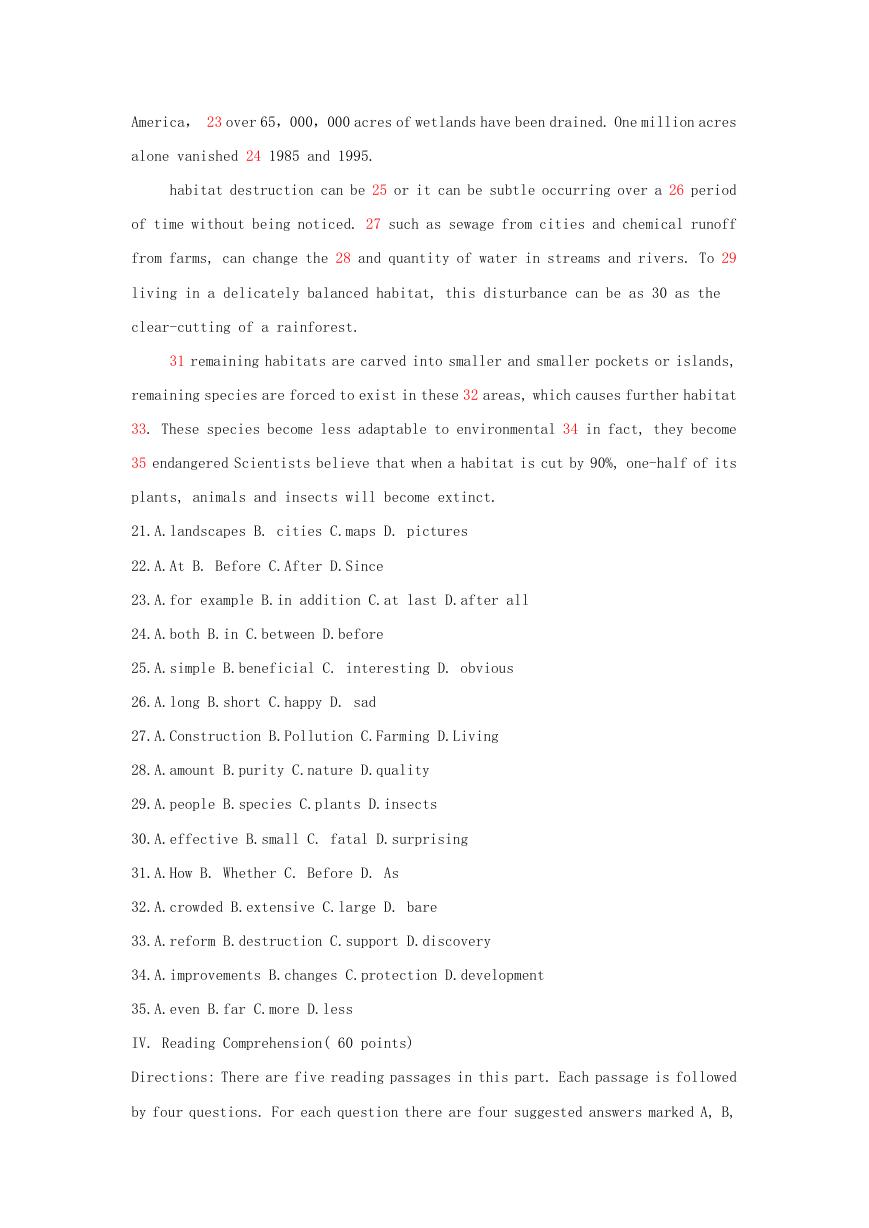
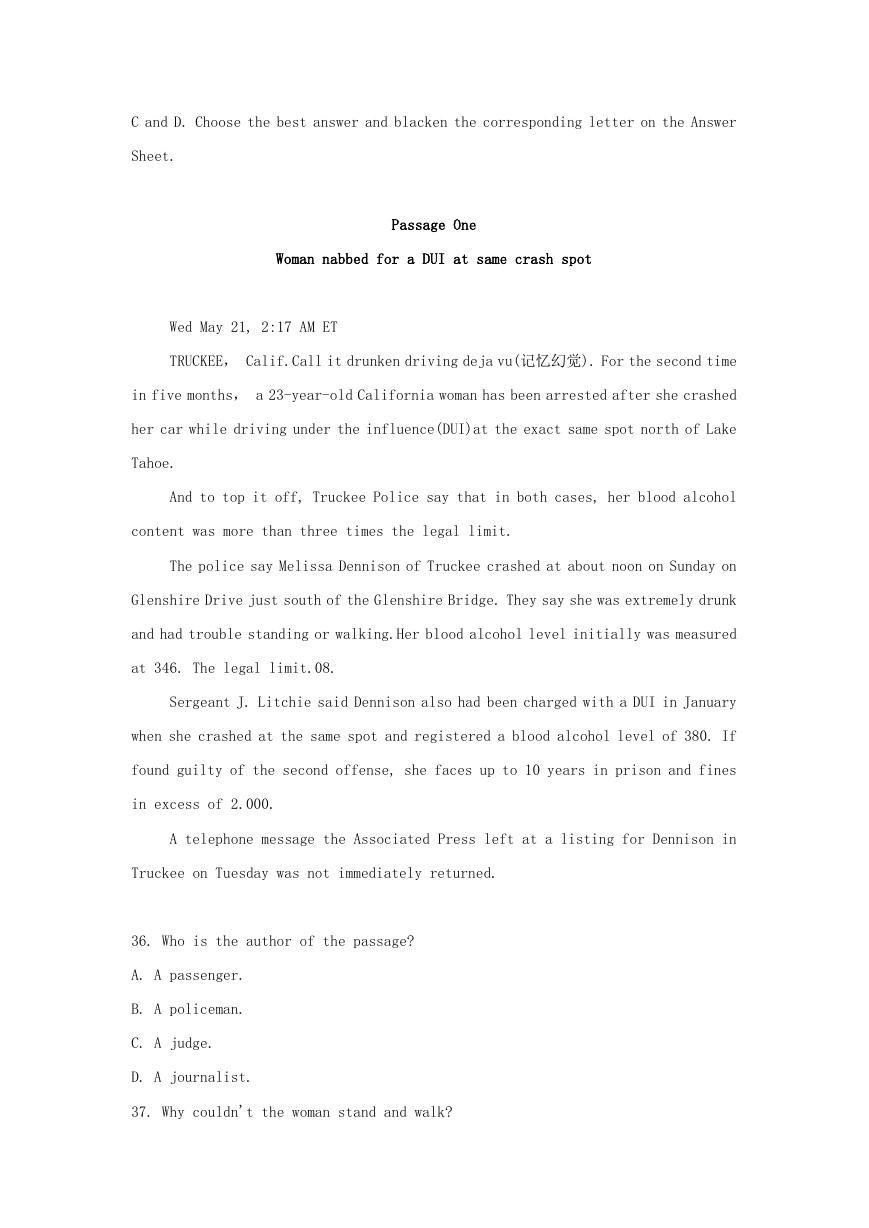

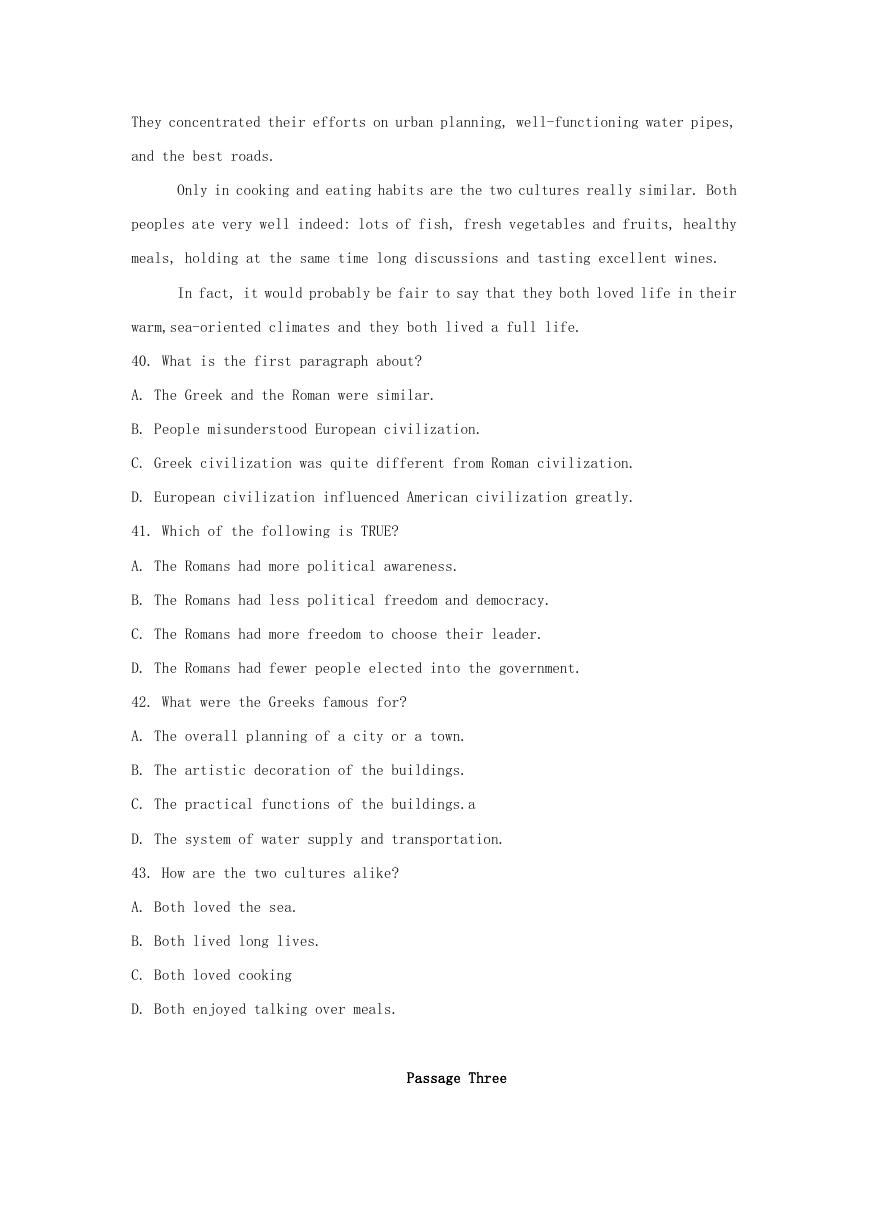
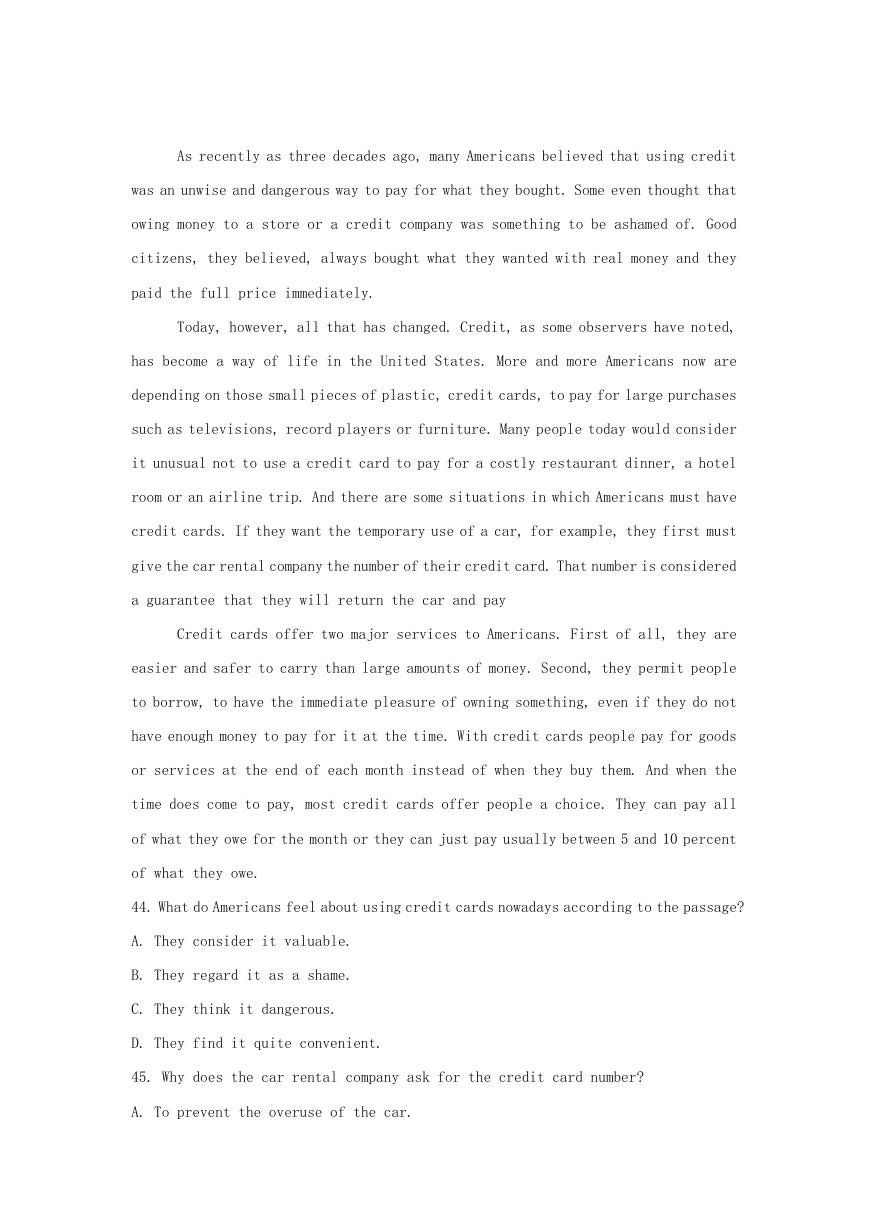
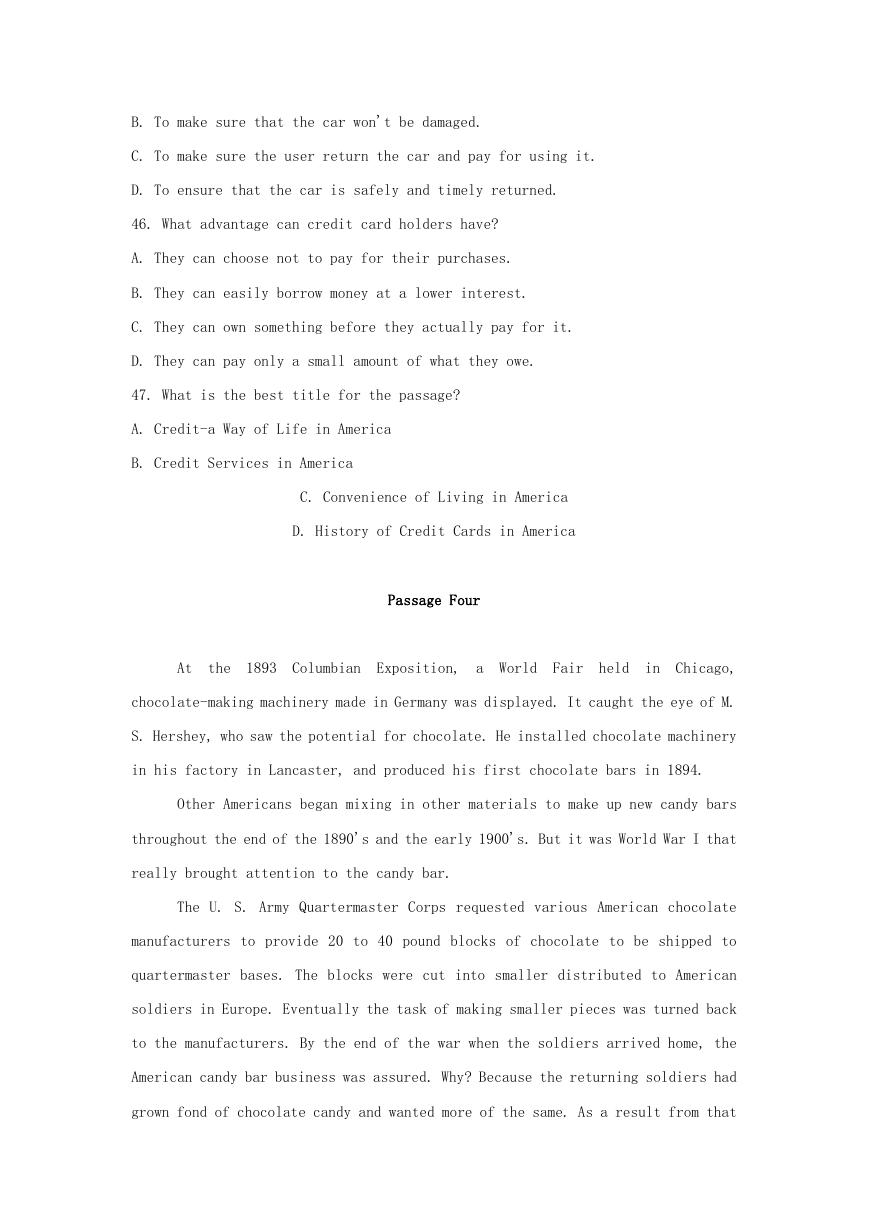








 2023年江西萍乡中考道德与法治真题及答案.doc
2023年江西萍乡中考道德与法治真题及答案.doc 2012年重庆南川中考生物真题及答案.doc
2012年重庆南川中考生物真题及答案.doc 2013年江西师范大学地理学综合及文艺理论基础考研真题.doc
2013年江西师范大学地理学综合及文艺理论基础考研真题.doc 2020年四川甘孜小升初语文真题及答案I卷.doc
2020年四川甘孜小升初语文真题及答案I卷.doc 2020年注册岩土工程师专业基础考试真题及答案.doc
2020年注册岩土工程师专业基础考试真题及答案.doc 2023-2024学年福建省厦门市九年级上学期数学月考试题及答案.doc
2023-2024学年福建省厦门市九年级上学期数学月考试题及答案.doc 2021-2022学年辽宁省沈阳市大东区九年级上学期语文期末试题及答案.doc
2021-2022学年辽宁省沈阳市大东区九年级上学期语文期末试题及答案.doc 2022-2023学年北京东城区初三第一学期物理期末试卷及答案.doc
2022-2023学年北京东城区初三第一学期物理期末试卷及答案.doc 2018上半年江西教师资格初中地理学科知识与教学能力真题及答案.doc
2018上半年江西教师资格初中地理学科知识与教学能力真题及答案.doc 2012年河北国家公务员申论考试真题及答案-省级.doc
2012年河北国家公务员申论考试真题及答案-省级.doc 2020-2021学年江苏省扬州市江都区邵樊片九年级上学期数学第一次质量检测试题及答案.doc
2020-2021学年江苏省扬州市江都区邵樊片九年级上学期数学第一次质量检测试题及答案.doc 2022下半年黑龙江教师资格证中学综合素质真题及答案.doc
2022下半年黑龙江教师资格证中学综合素质真题及答案.doc